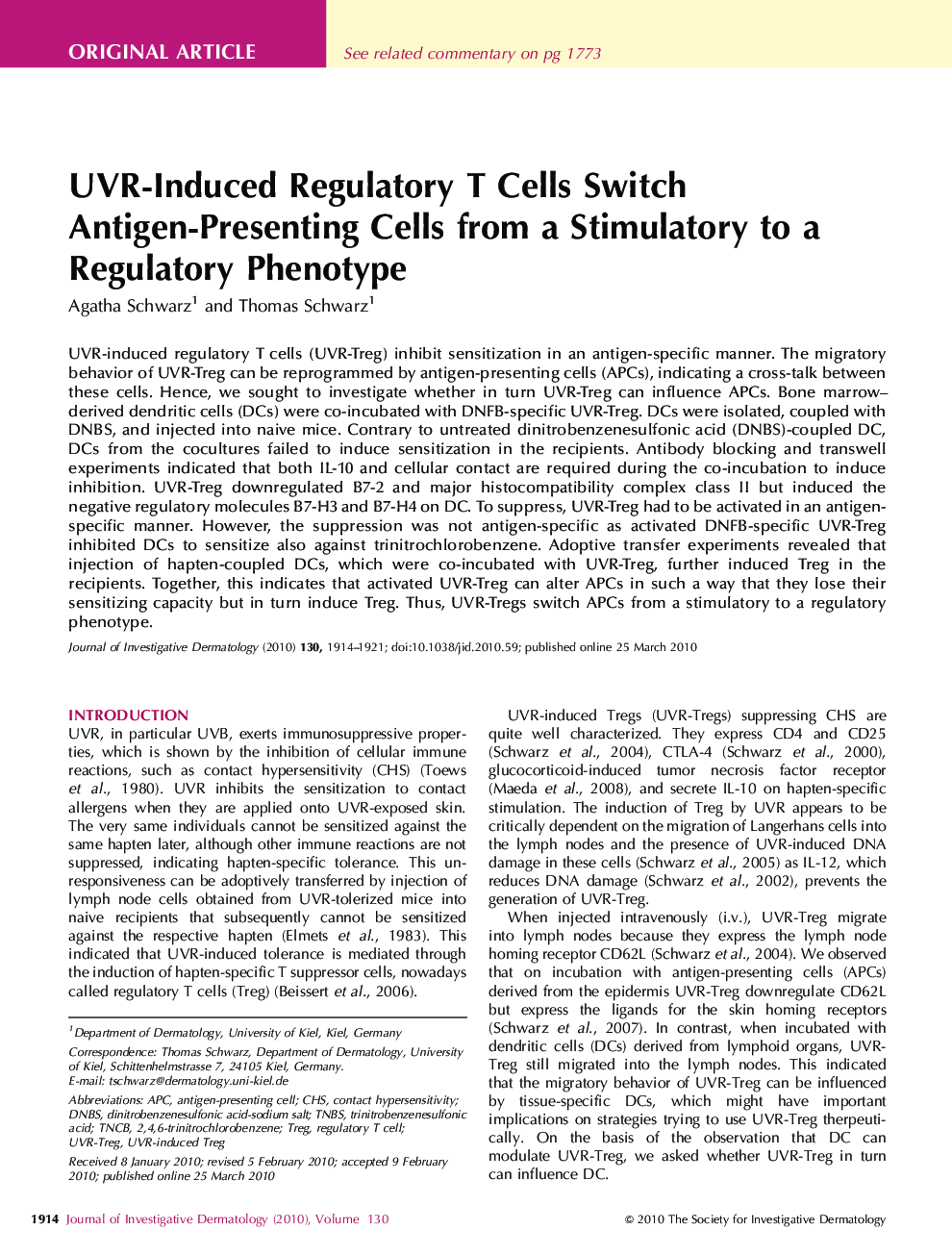| کد مقاله | کد نشریه | سال انتشار | مقاله انگلیسی | نسخه تمام متن |
|---|---|---|---|---|
| 3215775 | 1203543 | 2010 | 8 صفحه PDF | دانلود رایگان |

UVR-induced regulatory T cells (UVR-Treg) inhibit sensitization in an antigen-specific manner. The migratory behavior of UVR-Treg can be reprogrammed by antigen-presenting cells (APCs), indicating a cross-talk between these cells. Hence, we sought to investigate whether in turn UVR-Treg can influence APCs. Bone marrow–derived dendritic cells (DCs) were co-incubated with DNFB-specific UVR-Treg. DCs were isolated, coupled with DNBS, and injected into naive mice. Contrary to untreated dinitrobenzenesulfonic acid (DNBS)-coupled DC, DCs from the cocultures failed to induce sensitization in the recipients. Antibody blocking and transwell experiments indicated that both IL-10 and cellular contact are required during the co-incubation to induce inhibition. UVR-Treg downregulated B7-2 and major histocompatibility complex class II but induced the negative regulatory molecules B7-H3 and B7-H4 on DC. To suppress, UVR-Treg had to be activated in an antigen-specific manner. However, the suppression was not antigen-specific as activated DNFB-specific UVR-Treg inhibited DCs to sensitize also against trinitrochlorobenzene. Adoptive transfer experiments revealed that injection of hapten-coupled DCs, which were co-incubated with UVR-Treg, further induced Treg in the recipients. Together, this indicates that activated UVR-Treg can alter APCs in such a way that they lose their sensitizing capacity but in turn induce Treg. Thus, UVR-Tregs switch APCs from a stimulatory to a regulatory phenotype.
Journal: Journal of Investigative Dermatology - Volume 130, Issue 7, July 2010, Pages 1914–1921